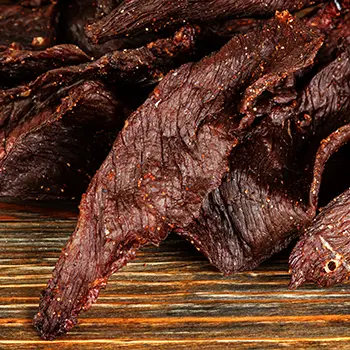The American Civil War was fought between the North and the South, divided only by the Mason-Dixon line on a map. This war was a major turn in American history where brothers fought against brothers.
Wartimes are not historically known for feeding soldiers well on either side.
The Civil War had two sides; the Confederate South and the Union North. Confederate states seceded from America to form their own free country where slave work was legal. The Union fought to keep the country united and the war ended in their favor in 1865, four years after the start of the war. Food rations were scarce and not favored by Union or Confederate soldiers.
Union soldiers were supplied with more food, yet the food they received was often unpalatable. Confederate leaders had much less to give their soldiers, so they ate similar food in fewer quantities with more room for error.
Union leaders often provided everything they could, but, nonperishables were hard to carry and eat on the move.
Many military-provided foods were regarded as disgusting. Soldiers on both sides would carry meat bags for their salt pork or beef. The bags would smell of rotted meat within days.
Still, the Union soldiers were much better off than the Confederate soldiers. The Union had a fully established government providing for them and the Confederacy did not, so provisions were worse.
If you’d like to put yourselves in 1860s soldier’s shoes, here are 10 Civil War foods from both sides that every homesteader should try once.
Beef Jerky
Chances are, you have had beef jerky at some point in time. Store-bought varieties are found all over the supermarket in many different flavors. By making beef jerky at home, you will get a better idea of what exactly Civil War soldiers were eating.
Beef jerky is a dried product that allowed it to last a long time in a soldier’s satchel. By removing the moisture from the meat, bacteria cannot multiply as quickly, thus ensuring a long last ability.
There are tons of simple recipes out there for drying beef without the use of special equipment, giving you the best idea of what 1860s soldiers ate on the move.
Beef or Chicken Tea
Yes, meat tea is a thing.  It was an important drink that provided Civil War soldiers with nutrients and protein without much effort. Beef tea is a flavorful, concentrated beef stock made with organs, bones, meat, and connective tissue left over from farming cattle. Soldiers either made this recipe their own or drank provided beef tea.
It was an important drink that provided Civil War soldiers with nutrients and protein without much effort. Beef tea is a flavorful, concentrated beef stock made with organs, bones, meat, and connective tissue left over from farming cattle. Soldiers either made this recipe their own or drank provided beef tea.
Soldiers were always on the move, so cooking something in one place for long periods was not always an option. However, once they received their meat tea, it could be drunk while walking from one battle to another.
Meat tea provided tons of protein and energy to men and is still healthfully enjoyed today in the form of bone broth.
Captured Cattle
Disclaimer: I am not advocating for the theft of other farmer’s animals in today’s world!
However, during the Civil War times, it was common for soldiers, especially Confederates, to steal cattle from local farms. Confederate soldiers were not provided with food on as regular of a basis as Union soldiers, so they had to get thrifty to survive.
Pigs, goats, sheep, and chickens were all “borrowed” during this time to feed the famished fighters of the war. Soldiers could also rely on the kindness of farmers to give animals, if they were on the same side of the war, that is.
Cornbread
Cornmeal mixed with water and baked over an open fire was about as homemade as food got during the Civil War. Cornbread would be consumed long after its freshness and moisture evaporated just so the soldiers did not work on an empty stomach.
Some Confederate soldiers even cooked their cornbread on their muskets. They turned cornmeal into a dough and then wrapped it around the ramrod for grilling. The results were charred but completely edible.
Dried Fruits and Vegetables
Dried fruits and vegetables are easy to carry without spoilage on the battlefield.
Dried fruit was harder to come by, yet, dried vegetables were much less favored. Vegetables without moisture were unpalatable to soldiers on both sides and needed to be cooked or soaked before eating. Dried veggies today work well in soups and stews, as they are commonly found in prepared dried soup mixes.
Foraged Produce
Soldiers, especially in the South, often ran out of food before more was provided. They often relied on the kindness of strangers, who would set up food stands right outside battlefields. If food was not provided, soldiers needed to forage to survive.
Southern soldiers would forage anything they could find; dandelions, berries, wild onions, and small animals were among the few. Union soldiers luckily did not come across food shortages often. Today, foraging is a fun practice that provides tasty foods for cheap. Bring along a guide to ensure you are foraging and eating edible foods!
Oranges
To fight off scurvy and the terrible symptoms that come with it, consuming oranges was a big deal for Civil War soldiers. The fruit was provided more in the north, leading to healthier living standards for Union soldiers.
Worrying about scurvy is a thing of the past, but oranges are still a healthy, tasty fruit to keep around. Orange trees make tons of oranges every year, so consider growing one if you live in the right climate.
Hardtack
You may have heard of this stuff before, as it has gotten humanity through many times of starvation. Hardtack is a mixture of wheat flour and water, cooked or baked over a flame, then dried for easy carrying.
It was so hard that it was known for chipping teeth when eating. To make hardtack more edible, soldiers would soak it in coffee or water to soften it. Due to its lack of moisture, this stuff could be stored for weeks and kept as an emergency food source.
Wild Game
Soldiers already had guns and weapons, so they used them for hunting in desperate times. Confederate soldiers hunted any wild game they could find such as turkeys, wild hogs, and geese. Hunting and foraging were much more common in the South among soldiers.
Many folks still hunt wild game to this day and much prefer the flavor to store-bought meats.
Salt Pork
Back in the 1860s, salt pork was widely regarded as “bacon”. The bacon we know today is a smoked, cured meat that we crisp up during cooking.
Back then, it was a general term for dried, salted hog meat. Salt pork was easily transported and often contained undesirable cuts of meat such as connective tissue and organ meat. You can still find salt pork today sans organ meat.
One More Thing
Even if it’s not food, everyone’s favorite wake-up juice was bought, bartered, and traded in Civil War times. Coffee was inexpensive, tasty, and kept soldiers awake during long travels. It also stayed fresh for a while and was easy to carry around. Union soldiers often had commissaries where they would buy coffee, whereas Confederate soldiers did not.
During battle downtimes, Union soldiers would trade coffee with Confederates for tobacco, a Confederate crop that was in short supply up north.
The Civil War was a dark time in American history, dividing the nation into two angry sides. The Union soldiers were well-provided although some foods were not very pleasing. Confederate soldiers were significantly less well-off. The need to forage, steal, hunt, and trade was much more prevalent in the South to avoid starvation as the war raged on.
Give these Civil War-era foods a try and you’ll be able to briefly empathize with the hardships of 1860s wartimes.
This article first appeared here.
You may also like:
Native American Recipes Every Homesteader Must Know
How to Make the Ultimate Survival Food (Video)
1800s Pioneer Items You Should Still Have At Home
50 Tips From the Great Depression
Best Crops For Your Survival Garden














Interesting article, but please…. The reasons for the Civil War were myriad. Slavery was not the only issue. The overarching issue was States Rights.
There is so much unrest in the country now. Please strive to be precise, because words are terribly important.